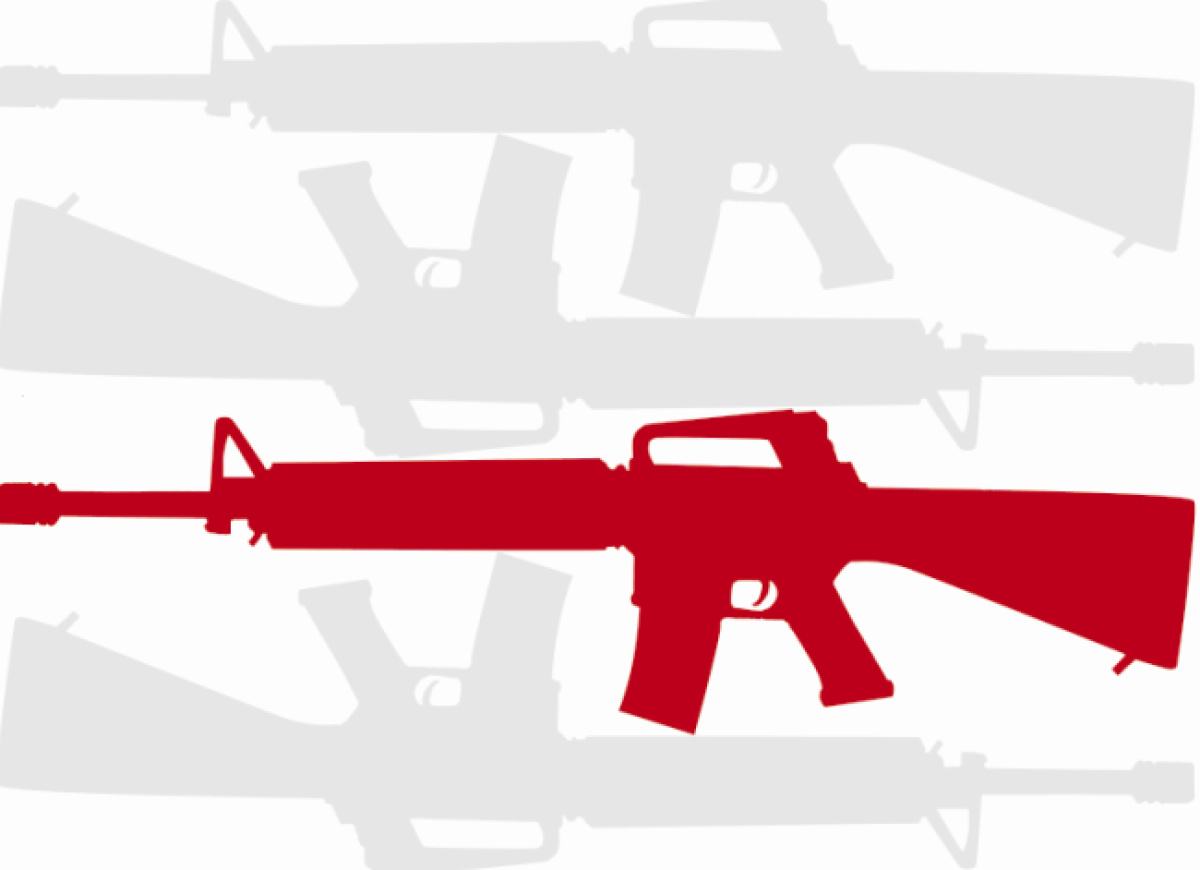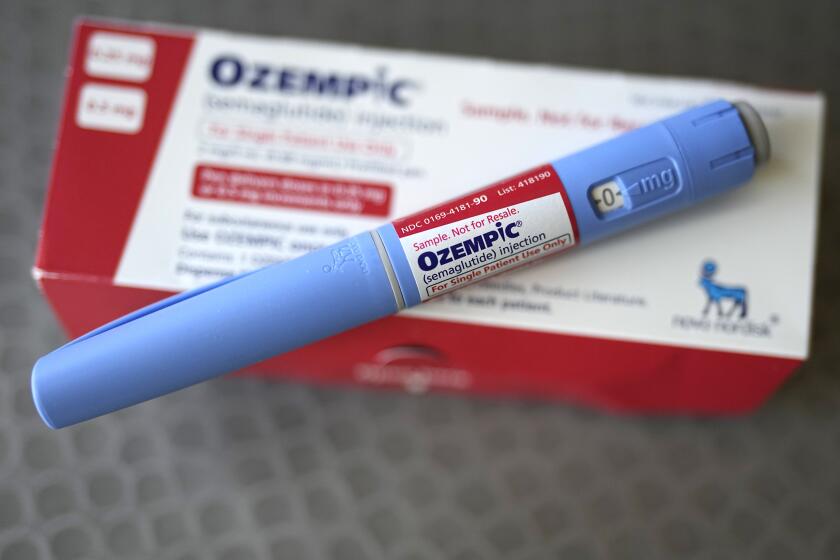Op-Ed: The Latin American gun leak

- Share via
During the 1980s, El Salvador was the single largest recipient of U.S. military hardware and weaponry in the Western Hemisphere. Although the Central American country’s civil war ended in 1992, the guns, grenades and bullets linger, as do their murderous effects. In September, a U.S. official from the Bureau of Alcohol, Tobacco, Firearms and Explosives estimated that half the weapons available on El Salvador’s vibrant black market were made in the United States.
Although some arms and ammunition were undoubtedly illegally trafficked from the United States, and Latin American authorities routinely blame shadowy foreign arms dealers for running guns to Central and South America, the real source is probably much closer to home: local military and police arsenals. A good example of this can be found in the case of a Salvadoran officer who was sentenced in November for selling about 50 weapons on the black market, including four AR-15s, the commercial version of the U.S.-made M16 assault rifle. All of them were siphoned from Salvadoran army stores.
For decades, many Central and South American countries were devoted consumers of U.S. military- and civilian-issue hardware, while a handful of leftist governments were supplied Russian assault rifles and munitions. These U.S. and Russian exports continue, but now dozens of countries, led by Austria, Belgium, Czech Republic, Germany, Israel, Italy, Spain and Turkey export weapons to Latin America. Regional imports of all arms and ammunition skyrocketed by almost 400% between 1992 and 2012, with Brazil, Colombia and Venezuela among the leading purchasers.
Not surprisingly, these same countries — Brazil, Colombia and Venezuela — also register some of the highest homicide rates in the world. Notwithstanding variations in lethal violence between and within countries, the regional homicide rate is 28.5 per 100,000. The global average hovers around 7 per 100,000.
Latin American statistics on gun violence are breathtaking. Its residents account for just 8.5% of the world’s population, but 27% of its homicides. According to one recent survey, 34 of 50 of the most violent cities in the world are in the Americas.
Firearms play an important role in shaping the lethality of everyday violence. Roughly 75% of all homicides in the region are a result of gunshot injuries. The global average is around 50%. In Brazil, Colombia, Guatemala and Honduras, the rate exceeds 90%.
As the world’s largest arms exporter and importer, the United States still plays an important role in facilitating the continued supply of guns to the rest of the Americas. The closer one’s border is to the United States, the greater the likely inflow of arms. Mexico, for example, has an estimated influx of more than 212,000 illegal firearms from the U.S. each year owing to straw purchases.
And there are also legacy effects of guns covertly shipped from the United States to Central America and parts of the Caribbean. During the civil wars between the 1960s and 1990s, U.S. intelligence clandestinely supplied governments and rebel factions in Colombia, Cuba, Dominican Republic, El Salvador, Guatemala, Haiti, Honduras, Peru and Nicaragua. There is still a sizable array of military- and police-issue weapons kicking around Central America’s Northern Triangle and the so-called tri-border area in South America, some of it in the hands of drug cartels and gangs.
Much less often discussed are military- and police-issue arms and ammunition leaked from existing Latin American government stockpiles. Weapons are also routinely pilfered from the current stocks of the armed forces and police. The leakage is considerable and probably one of the key sources of weaponry sustaining criminal organizations, drug trafficking gangs, private security firms, militia and others in the region.
Complicating matters, there is only sporadic regional cooperation to control and monitor arms transfers, trafficking and leakage in Latin America. Some countries are busily expanding their market share in the defense sector. Certain Latin American governments also are pursuing self-sufficiency in arms production. Brazil is already the second-largest exporter of firearms and ammunition in the Western Hemisphere. With Russian support, Venezuela expanded its third-generation AK-47 manufacturing capabilities. Mexico is an important producer of ammunition.
Arms transfer agreements are only weakly adhered to and applied. For example, Latin American countries seldom report to the U.N. Register of Conventional Arms, a system initially conceived to build confidence and transparency in the arms trade. Meanwhile, the legally binding firearms convention of the Organization of American States only has six countries reporting.
The freshly minted Arms Trade Treaty promises a more comprehensive approach to managing weapons transfers. Although signed by most countries in the region, only 10 ratified it. More fundamentally, the treaty offers a 100% solution for just 10% of the problem. It is designed to prevent interstate transfers and diversion of weapons to governments with a poor human rights record. But by far the biggest problem is illicit trafficking and domestic diversion and leakage.
Although the region’s leaders have legitimate concerns about international arms trafficking, Latin America’s governments will need to confront the enemy within. At a minimum, more transparency is required in relation to the domestic manufacture and local retail of firearms and ammunition, especially revolvers and pistols, which are used in most of the killing. Greater oversight and management are needed over exports, imports and surplus stocks. This means investing in ongoing record-keeping, marking and tracing of weapons and ammunition, as advocated by the OAS.
And they can also revise domestic legislation related to firearms retail and ownership to close loopholes. They can also immediately start destroying old military and police surplus. Most of all, Latin American governments need to double down on accountability and transparency. The sentencing of the Salvadoran military officer in November for his role in trafficking weapons was a step forward. But for every prosecution, there are dozens more who get away with a crime. Without tighter controls, expect the carnage to continue.
Robert Muggah is research director of the Igarape Institute, a think tank based in Brazil. Steven Dudley is the co-director of InSight Crime, a media group in Washington.Follow the Opinion section on Twitter @latimesopinion
More to Read
A cure for the common opinion
Get thought-provoking perspectives with our weekly newsletter.
You may occasionally receive promotional content from the Los Angeles Times.









